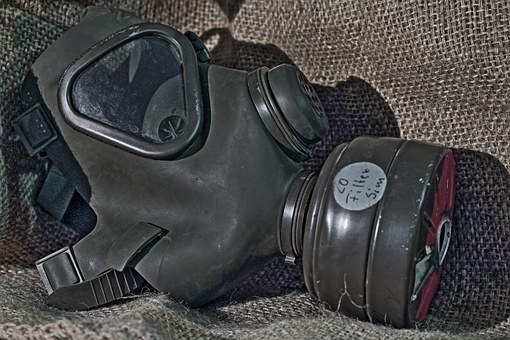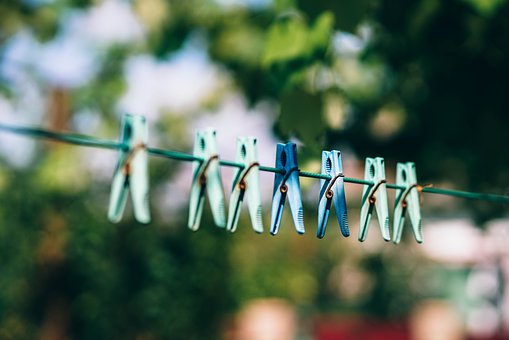The dryer sheet was first invented in 1969. The patent was sold to Proctor & Gamble and the Bounce dryer sheet was introduced and popularized among American homemakers shortly thereafter. The dryer sheet has been a staple in many household laundry rooms for decades now. It is an easy and efficient solution to static cling and leaves clothes smelling fragrant. What more do you need to know?
The Bright Side of Dryer Sheets
Dryer sheets are basically a substitute for liquid fabric softener. It is designed to add cations to reduce the static cling that results from the friction of the clothing in the laundering process. The addition of cations also allows the fabric fibers to “stand up,” making the fabric feel softer to the touch than clothing that has been line-dried. Dryer sheets, as well as detergents and fabric softeners, add fragrance so that the fabrics come out of the laundry perfumed and pleasant smelling.
The Dark Side of Dryer Sheets
Dryer Sheets might be “too good to be true.” The hazards of dryer sheets involve your personal health and the longevity of your dryer machine.
The health hazards of dryer sheets are most often self-identified symptoms resulting from contact and/or inhalation of the detergents and softening agents. Symptoms can include runny nose, throat irritation, even asthma attacks; contact dermatitis and other skin irritation, and migraines. Some research indicates a high toxic load, including chemical compounds that are known carcinogens, hormone disruptors, and respiratory irritants. The severity of the health risks are debatable, as the research most commonly cited did not test dryer sheets exclusively, but included them as a part of a larger assortment of household products. However, according to draxe.com, the U.S. Product Safety Commission does not require dryer sheet manufacturers to list the ingredients, which makes testing more difficult and may allow the toxic content to be higher than manufacturer reports.
Dryer sheets may also shorten the life of your dryer. Several brand manufacturer’s instruction and care manuals recommend against the use of dryer sheets, stating that the chemicals in the sheets can build up and clog the small holes in the lint screen–clogging the filter and impeding air circulation. Even though the lint trap will appear clean, there is a film that prevents proper air flow and can prematurely wear out the heating element in your dryer.
Dryer sheets can also damage or diminish the functionality of some fabrics. Dryer sheets are made to disperse a thin coat of waxy chemicals to your clothing. That waxy chemical layer is what makes the fabrics feel softer and keeps the fabric from clinging to itself. However, when applied to certain some fabrics, it makes them less functional. Microfiber material is damaged by heat and dryer sheets and will not be as absorbent. Spandex, nylon, and other materials designed to wick moisture and hold the shape of a garment will be weakened, making the article less absorbent and stretched out. More and more clothing incorporates spandex or nylon to provide stretch and keep their shape longer. You may be surprised by the amount of your laundry that contains some spandex or similar material that may be impacted by the use of dryer sheets. Fire retardant clothing and material may also be affected by the waxy coating from the dryer sheets. A lot of baby clothing and blankets have flame retardant fabrics in them. These fabrics will not be as effective if they have been laundered with fabric softeners.
What To Do?
If you are chemically sensitive or find that you are experiencing any skin or respiratory ailments, you may benefit from cutting out fabric softener entirely (liquid or dryer sheets) and opt for a Natural Alternative to Dryer Sheets. If you are looking more at the economic breakdown, you might consider giving up dryer sheets in order to prolong the life of your dryer and clothing. If you demand the efficiency of dryer sheets, you can periodically scrub the lint filter with a scrub brush and hot, soapy water to remove the film that is on the screen and separate the fabrics that should not be laundered with fabric softener.
Make sure to check your lease to see if cleaning your lint filter is required at move out.
We take care to protect your investments. Read more on our blog page. Contact us to let us know if there is something you would like to know more about!
References
Fabric softeners and dryer sheets: myths vs facts. Household Tips Guide. Retrieved from https://household-tips.thefuntimesguide.com/fabric-softener/.
Patterson, S. (2016). Here’s why you should never use dryer sheets again & what to use instead. Natural Living Ideas. Retrieved from http://www.naturallivingideas.com/dryer-sheets-dangers/.
Romero, V. (2013). 7 toxic reasons to ditch dryer sheets. Healthy Living How To. Retrieved from https://healthylivinghowto.com/healthy-body-7-toxic-reasons-to-ditch-dryer-sheets/.
(2015). Some dryer softener sheets can clog your lint filter. TruthOrFiction.com. Retrieved from https://www.truthorfiction.com/dryer-sheets/.
Stop using dryer sheets immediately! Dr. Axe: Food is Medicine. Retrieved from https://draxe.com/dryer-sheets/.





